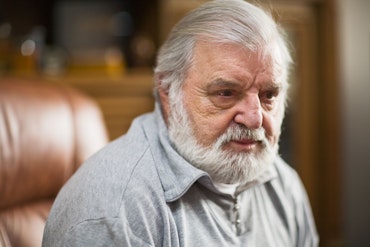Australia’s population is getting older – results of 2016 Census revealed
We’re a fast changing, ever-expanding, culturally diverse nation – and we’re getting older according to the results of the Australian Bureau of Statistics (ABS) 2016 Census.

Census results show we’re getting older and more culturally diverse as a nation (Source: Shutterstock)
Last year’s Census found there are 664,473 additional people aged 65 and over living in Australia. Tasmania is our most ‘experienced’ state, with nearly one in five people aged 65 and over. The Apple Isle also recorded Australia’s highest median age (42 years), ahead of South Australia (40 years).
Australia’s ageing population shouldn’t come as a surprise; in 2015, the UN predicted the number of people over the age of 65 will double, and the ‘oldest-old’ population, those over 80, will triple worldwide by 2050.
When it comes to how many men and women there are, women make up 51% of the population in 2016. However the proportion of the female population increases with age; of those aged 65 years and over, 54% are female, compared to 63% of those aged 85 years and over.
The shift to collect data online was dogged by controversy, with many who had no access to internet concerned they hadn’t received paper forms. The then Chief Advocate for National Seniors Sarah Saunders called it a ‘debacle’ saying the shift to online was poorly communicated, and little regard was given to older people without internet access.”
On Census night last August, the website crashed and was down for 40 hours; the ABS blamed the crash on overseas hackers.
Given the controversy, how accurate is the data?
The Independent Assurance Panel, established by the Australian Statistician David W. Kalisch to provide extra assurance and transparency of Census data quality, concluded the 2016 Census data can be used with confidence.
“The ABS undertook a range of quality checks, including a thorough Post Enumeration Survey, to ensure the data can be trusted. These quality assurance measures, and a range of other factors, were considered and verified by the Panel,” says Mr Kalisch.
“The 2016 Census had a response rate of 95.1 percent and a net undercount of 1.0 percent, meaning the quality is comparable to both previous Australian Censuses and Censuses in other countries, such as New Zealand, Canada, and the United Kingdom,” he adds.
He says 63 per cent of people completed the Census online, embracing the digital-first approach and contributing to faster data processing and data quality improvements.











![The new Aged Care Act exposure draft is slated for release in December of 2023, but advocates hope to see it rolled out on January 1, 2024. [Source: Shutterstock]](https://agedcareguide-assets.imgix.net/news/articles/wp/agedcareact__0811.jpg?fm=pjpg&w=520&format=auto&q=65)












Comments